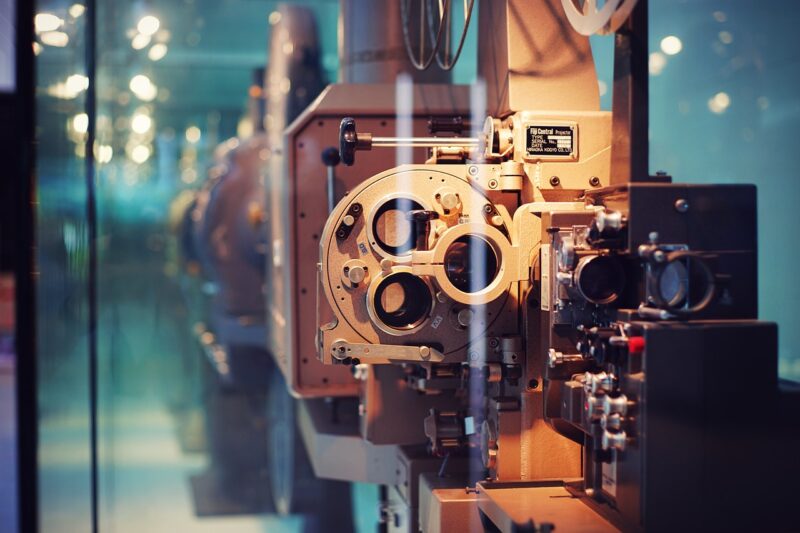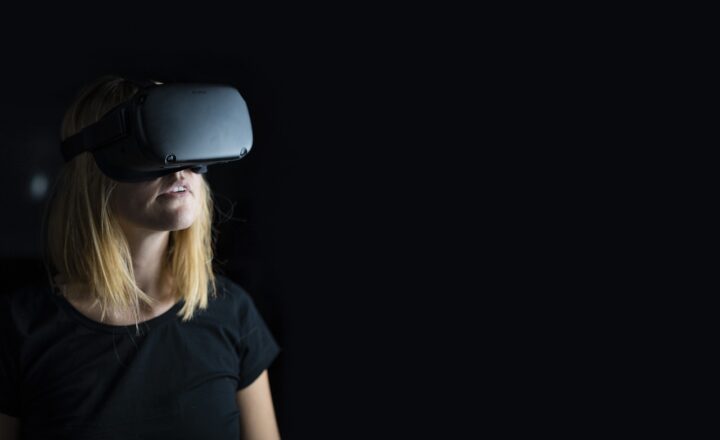How Technology Is Allowing Us to Travel Back in Time with Cinema
November 15, 2024

Cinema has long been a source of escape and adventure, taking audiences to lands unfamiliar, times distant, and places that exist only in our imagination. Yet, with the rapid advancements in technology, filmmakers are now able to craft experiences that allow us to travel through time in ways we could never have imagined. From virtual reality to cutting-edge CGI, technology is revolutionizing the art of storytelling, making time travel in cinema not just a concept, but a fully immersive experience.
1. The Evolution of Time Travel in Film
The time travel genre has been popular in cinema since the early 20th century. Films like “A Trip to the Moon” (1902) and the more famous “The Time Machine” (1960) set the stage for exploring time as a theatrical narrative. However, it wasn’t until the advent of special effects and computer-generated imagery (CGI) that filmmakers could visually represent the complexities of time travel more convincingly.
From the classic “Back to the Future” series to the intricate stories told in “Interstellar” and “Doctor Strange” that manipulate time and space, technology is the backbone of these narratives. Digital tools allow for a seamless merging of the real and the fantastic, bringing audiences along for a thrilling journey through time.
2. Virtual Reality (VR): Immersive Time Travel
Virtual Reality has emerged as a groundbreaking technology that is shifting the cinematic landscape. By providing a 360-degree experience, VR transports audiences into the worlds of movies, allowing them to experience time travel as if they were part of the story. Examples of this technology in use include:
- Experience the Past: Projects like “The Walking Dead: Onslaught” allow players to engage with historical and fictional characters in immersive settings that replicate past realities.
- Interactive Storytelling: By blending gaming mechanics with cinematic narratives, VR can turn a simple storyline into an interactive adventure, letting users make pivotal choices that affect the outcome of their time-traveling journey.
- Touring Historical Events: VR experiences, such as “The VR Museum of Fine Art,” offer guided tours that transport users not just to art galleries but also back to historical events, embodying the sensation of witnessing history first-hand.
Through these immersive techniques, filmmakers are re-defining the boundaries of audience engagement, making time travel an incredibly personal experience.
3. CGI: Bringing Historical Moments to Life
Computer-generated imagery (CGI) has been instrumental in how filmmakers depict time. By combining state-of-the-art animation with real-life footage, directors can recreate historical events with astonishing accuracy. This revolution has allowed for:
- Accurate Representations: Films like “Dunkirk” present vivid images of World War II battles using CGI-enhanced visuals that viewers feel are authentic, making them feel as if they were part of the era.
- De-Aging Characters: Blockbusters like “The Irishman” utilize CGI to de-age actors, allowing their characters to populate different eras convincingly, offering audiences a multi-decade view of their arcs in the story.
- Historical Figures Come to Life: Through photorealistic CGI, films can recreate historical figures who have shaped our world, deepening our connection to significant events as we visually interact with these figures within a historical context.
With CGI, we can vividly revisit the past, experience key historical moments, and inevitably reflect on how they shape our present.
4. Sound Engineering: Auditory Time Travel
In addition to visual effects, sound engineering plays a crucial role in transporting viewers through time. The integration of historical soundtracks, soundscapes, and audio cues can powerfully evoke specific eras. Some tactics include:
- Period-Accurate Scores: Using instruments and compositions that were prominent in certain time periods allows films to create an acoustical authenticity to match the visual experience.
- Immersive Audio Techniques: The use of 3D audio allows viewers to feel as if they are present in the environment, enhancing suspense and engagement within the storyline and enhancing the time travel sensation.
- Auditory Cues for Transition: Filmmakers cleverly implement audio transitions as characters move through time, creating an additional layer of immersion that resonates with audiences.<
Soundscapes most effectively combine with visual aspects to evoke emotion and pull viewers deeper into the journey.
5. Augmented Reality (AR): Blending Dimensions
Augmented Reality allows filmmakers to augment the film-watching experience by overlaying digital elements on the real world. As seen in projects like “Ghost in the Shell: The New Movie,” AR can create hybrid environments where audiences can interact with fantastical elements while still being grounded in reality. With AR, viewers can:
- Engage with Historical Contexts: Through apps, users can scan environments to unlock experiences about significant historical events or figures related to the film they’re watching, making time travel a reality even outside the cinema walls.
- Interactive Experience Enhancements: By providing informational overlays or interactive segments during critical film scenes, AR can enrich narratives and encourage discovery beyond traditional storytelling methods.
- Create Shared Experience: AR can facilitate group interactions, where multiple viewers engage in the same augmented experience and discuss insights, creating a community around the time-travel narrative.
AR enhances the storytelling experience, allowing individuals to immerse themselves in the narrative even further.
Conclusion: The Future of Time Travel in Cinema
The advancements in technology have transformed how we experience cinema, particularly in the realm of time travel. By uniting virtual reality, CGI, sound engineering, and augmented reality, filmmakers are constructing immersive narratives that transcend traditional boundaries. The blending of imaginative storytelling with technological power not only evokes nostalgia but also challenges our understanding of time itself. As technology evolves, the portrayal of time travel in cinema will surely captivate audiences in unprecedented ways, allowing us to journey through centuries in the blink of an eye.
In this age of rapid technological evolution, the only limit to how we travel through time and the stories we can tell may well be our own imagination.








